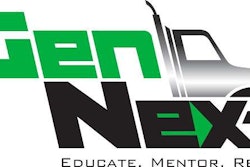Trucking industry veteran and professional trainer Rick Kempksi provided GenNext members guidance on project management positions and phases during the group’s Q4 webinar on Tuesday.
Kempksi says project management is a vital part of business operations in today’s aftermarket landscape because it allows businesses to monitor tasks in a way that encourages progress and productivity and, most importantly, eliminates surprises.
“In business … 90 percent of surprises are not good surprises,” he says.
Kempksi says managing a project requires a willingness to work in phases. He defines the five phases as follows:
Initiation: This is when a business begins addressing what they want to do. Kempksi says the initiation phase of project management doesn’t focus so much on the nuts and bolts of planning as much as the general concept of what needs to be done to accomplish the project’s goal. Kempksi says the initiation phase also is a good time for people associated with the project to create a ‘Statement of Work’ or project ‘charter.’ He says this document defines the scope of the project and its goals, and is used as a resource throughout the project.
Planning: This is when you decide exactly how you are going to complete the project you’ve created. Kempksi says the planning stage is the time when team members are recruited, timelines are set and financial obligations are met. Kempksi says the planning stage also is the period where individual roles are defined for the employees participating in the project. He says any successful project requires a sponsor, a leader or manager, and stakeholders. While the former typically serves as an authority figure who is committed to seeing the project succeed, the manager and stakeholders form the team that brings the project to completion. The project manager leads the day-to-day operation of the project, and the stakeholders use their individual areas of expertise to complete tasks and move the project forward.
Execution: Once you know what you need to do, you do it, Kempksi says. The execution phase is where all of the detailed planning comes to fruition. He adds that its important to not enter the execution phase until planning is 100 percent complete, as attempting to redesign the scope of a project once it is underway can be nearly impossible. The execution phase “culminates when you provide the [project’s] intended result,” Kempksi says.
Monitoring and Control: Kempkksi admits this isn’t a step so much as an aspect that should be constantly addressed during a project. He says a good project manager should regularly be checking up on all aspects of the project and ensuring things are following the pre-designated plan.
Closure: This is when you recap how you did. Kempksi says the closure step doesn’t have to take long but can be very beneficial. By taking time to evaluate how a team followed and executed a plan, you can find and correct weaknesses before starting another project.
GenNext members who missed Tuesday’s presentation and would like to see a video recording of it can check out the GenNext University tab on the GenNext website early next week.











